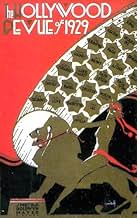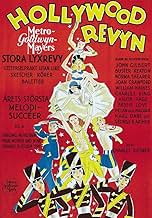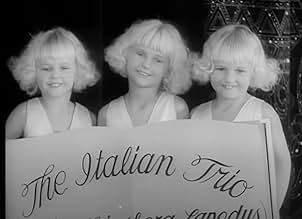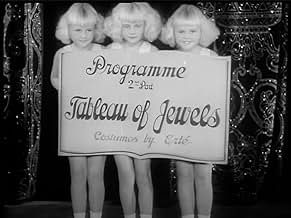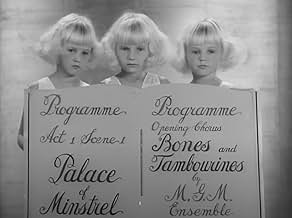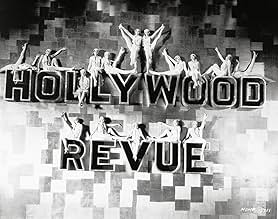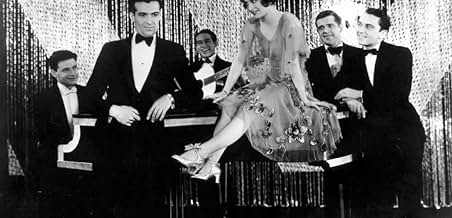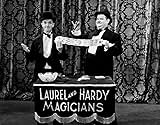IMDb-BEWERTUNG
5,7/10
2451
IHRE BEWERTUNG
Füge eine Handlung in deiner Sprache hinzuAn all-star revue featuring MGM contract players.An all-star revue featuring MGM contract players.An all-star revue featuring MGM contract players.
- Regie
- Drehbuch
- Hauptbesetzung
- Für 1 Oscar nominiert
- 1 Gewinn & 1 Nominierung insgesamt
Cliff Edwards
- Ukelele Ike
- (as Ukulele Ike)
Nils Asther
- Nils Asther
- (Gelöschte Szenen)
Brox Sisters
- The Brox Sisters
- (as Brox Sisters - Singing Trio)
Empfohlene Bewertungen
....suddenly it was decreed that everyone had to do one? That's what was happening in 1929, except it was naked voices, not naked bodies that were being revealed. No one could hear the stars talk, so they got to imagine what their voices were like. They also got to imagine what they were saying, or read it on the occasional title card. With sound, they heard the voices themselves and also the lines written for them. Conrad Nagel comes out sounding like the elegant gentleman he was. John Gilbert's voice is a little high pitched, (rumor has it that Louie Mayer, who hated him, had the sound track sped up), and effected. In his first film after this, he was asked to say "I love you, love you! about a dozen times during a love scene- a sequence parodied in "Singing in the Rain", and the audience laughed. Clara Bow revealed her thick Brooklynese, which seemed to belie her image as a gay party girl. Greta Garbo had a deep voice with a thick Swedish accent- just like the audience had imagined. Ben Turpin, the cross-eyed comedian, played against his image by playing swash-buckling heroes in the silents. Talkies revealed he sounded like he looked and made his films a little too ridiculous.
When you watch Hollywood Revue of 1929 and other films of that year, you are looking at some very nervous people who's recently minted stardom was threatened with extinction. And few of them made it. Those who did, like Joan Crawford, made it for reason not apparent in this musical review. In the early 30's, a deluge of stage stars like Spencer Tracy, Humphrey Bogart, James Cagney, Paul Muni, Katherine Hepburn, etc. would sweep them away and provide us with the stars of Hollywood's Golden Age.
When you watch Hollywood Revue of 1929 and other films of that year, you are looking at some very nervous people who's recently minted stardom was threatened with extinction. And few of them made it. Those who did, like Joan Crawford, made it for reason not apparent in this musical review. In the early 30's, a deluge of stage stars like Spencer Tracy, Humphrey Bogart, James Cagney, Paul Muni, Katherine Hepburn, etc. would sweep them away and provide us with the stars of Hollywood's Golden Age.
I love this film. I've commented before but just saw it again and have a few more "insights." It seems I like it better with each viewing. Along with The Broadway Melody and 42nd Street, one of the great early musicals--films that set the style and standard for decades to come. Yes there is debate as to the singing and dancing of Joan Crawford and Marion Davies, but there are great moments from Marie Dressler, Stan Laurel, Oliver Hardy, Buster Keaton, John Gilbert (I'm Utsnay about Ouyay), Norma Shearer, Cliff Edwards, the swell Brox Sisters, Conrad Nagel, Charles King, Polly Moran, Bessie Love, William Haines, Anita Page, the snappy June Purcell, Lionel Barrymore, Gus Edwards, a sly Jack Benny, and a slap-happy Ann Dvorak. Who could resist.
Oddities for a talkie include silent bits by Keaton and Laurel (Hardy does all the talking, and some schtick from Karl Dane and George K. Arthur (neither destined for talkie success) during a Benny violin solo. To carry forth the "revue" concept the film is introduced over a live orchestra pit and the intermission sees the musicians taking their seats to reprise the early tunes--Crawford's "Gotta Feelin' for You" chief among them. As noted in other comments, some acts are introed; some are not.
Considering all were singing live (no lip syncing here) the musical numbers are not bad at all. The recording (still primitive) hurts a little. Charles King comes off best as a straight singer, and the great Cliff Edwards (as Ukelele Ike) is a treat as the comic singer. Edwards does a straight intro to Singin' in the Rain as well as his signature falsetto scat. Joan Crawford, who sang in a bunch of early talkies, has a decent if unpolished voice, and her dancing was par for the course for 1929: lively but a little clunky. Remember, movie musicals were new and hadn't really developed a cinematic choreography. Marion Davies' number is the weakest in the film, which is too bad because she was a delightful performer, but singing and dancing weren't her high points. Marie Dressler cannot hit a false note. No matter how badly she mugs and hams it up, she is great. This film also shows hints of what Bessie Love might have done during the 30s with better handling by MGM. And ditto Polly Moran, who was diminished to playing Dressler's foil in a series of early comedies.
The Jack Benny we remember from his 1950s TV show is exactly the same 25 year earlier. All his mannerisms are in place as is his superb timing. Several parts of the film are very badly edited and sometimes hurt the timing or punchlines of comic bits. William Haines, nearly choking on a licorice button he rips from Benny's jacket, is handsome and gracious in a cameo.And Conrad Nagel reveals a not-bad singing voice as he serenades a ravishing Anita Page.
The Singin' in the Rain number rates highest. From the art deco set of Cedric Gibbons to the terrific singing of Cliff Edwards and the Brox Sisters, this number is a true classic. The dancing is simple but effective, the rain effects are OK as is the reflecting "pool." The reprise by the Brox Sisters (all 3 wrapped in 1 raincoat) is wonderful--as is the comic reprise by Dressler, Love, and Moran. Note the arm motions made by the Brox Sisters; they are same as used by Jean Hagen in the 1952 Singin in the Rain.
I love this film.
Oddities for a talkie include silent bits by Keaton and Laurel (Hardy does all the talking, and some schtick from Karl Dane and George K. Arthur (neither destined for talkie success) during a Benny violin solo. To carry forth the "revue" concept the film is introduced over a live orchestra pit and the intermission sees the musicians taking their seats to reprise the early tunes--Crawford's "Gotta Feelin' for You" chief among them. As noted in other comments, some acts are introed; some are not.
Considering all were singing live (no lip syncing here) the musical numbers are not bad at all. The recording (still primitive) hurts a little. Charles King comes off best as a straight singer, and the great Cliff Edwards (as Ukelele Ike) is a treat as the comic singer. Edwards does a straight intro to Singin' in the Rain as well as his signature falsetto scat. Joan Crawford, who sang in a bunch of early talkies, has a decent if unpolished voice, and her dancing was par for the course for 1929: lively but a little clunky. Remember, movie musicals were new and hadn't really developed a cinematic choreography. Marion Davies' number is the weakest in the film, which is too bad because she was a delightful performer, but singing and dancing weren't her high points. Marie Dressler cannot hit a false note. No matter how badly she mugs and hams it up, she is great. This film also shows hints of what Bessie Love might have done during the 30s with better handling by MGM. And ditto Polly Moran, who was diminished to playing Dressler's foil in a series of early comedies.
The Jack Benny we remember from his 1950s TV show is exactly the same 25 year earlier. All his mannerisms are in place as is his superb timing. Several parts of the film are very badly edited and sometimes hurt the timing or punchlines of comic bits. William Haines, nearly choking on a licorice button he rips from Benny's jacket, is handsome and gracious in a cameo.And Conrad Nagel reveals a not-bad singing voice as he serenades a ravishing Anita Page.
The Singin' in the Rain number rates highest. From the art deco set of Cedric Gibbons to the terrific singing of Cliff Edwards and the Brox Sisters, this number is a true classic. The dancing is simple but effective, the rain effects are OK as is the reflecting "pool." The reprise by the Brox Sisters (all 3 wrapped in 1 raincoat) is wonderful--as is the comic reprise by Dressler, Love, and Moran. Note the arm motions made by the Brox Sisters; they are same as used by Jean Hagen in the 1952 Singin in the Rain.
I love this film.
MGM used to boast that they had more stars than were in the heavens. This transitional picture shows some "stars", people who still have name recognition. Some of the performers were near the end of their career, some at the beginning, and others, probably did not have much of a career before or after this.
There's no real plot - it's pretty much a variety show hosted by Conrad Nagle and Jack Benny. There are some historical moments here - the first performance of "Singing in the Rain", the alleged cause of John Gilbert's career nosediving, Joan Crawford singing and dancing, some slapstick from Laurel & Hardy. There are appearances by the stunningly beautiful Anita Page who looks kind of sad while Conrad Nagle appears to be singing to her. William Haines, just before Louis B. Mayer ended his acting career, eating part of Jack Benny's clothing. Bessie Love appeared to come from one of Jack Benny's pockets - she said there was a $100 bill in the pocket, Benny quips that it's not his suit.
Parts of this was the inspiration of the movie "Singing in the Rain", which was done 20+ years later.
The pluses to this: some color sequences, including the closing performance of "Singing in the Rain", a weird dance sequence by Buster Keaton, who remains mute, and it's a great glimpse into Hollywood as it transitioned from the Silent Era to the age of "talkies". One interesting thing was the cameras weren't as static as they were for many of the early "talkies". There's also a kind of experimental dance sequence where it appears that they used some of the negatives in place of the processed film.
Some of the minuses are it wasn't a smooth transition from the Silent Era to the age of "talkies" - the sound quality is very inconsistent. Some people sounded kind of muffled, some people's voices weren't picked up very well. The version that was played by TCM on 8/4/08 wasn't closed captioned, so if you can't understand what someone is saying or singing, you don't have any captioning to help you out.
This is a good movie if you are interested in relatively early movies - it's almost 80 years old. It's also a chance to see some performers that didn't appear very often.
There's no real plot - it's pretty much a variety show hosted by Conrad Nagle and Jack Benny. There are some historical moments here - the first performance of "Singing in the Rain", the alleged cause of John Gilbert's career nosediving, Joan Crawford singing and dancing, some slapstick from Laurel & Hardy. There are appearances by the stunningly beautiful Anita Page who looks kind of sad while Conrad Nagle appears to be singing to her. William Haines, just before Louis B. Mayer ended his acting career, eating part of Jack Benny's clothing. Bessie Love appeared to come from one of Jack Benny's pockets - she said there was a $100 bill in the pocket, Benny quips that it's not his suit.
Parts of this was the inspiration of the movie "Singing in the Rain", which was done 20+ years later.
The pluses to this: some color sequences, including the closing performance of "Singing in the Rain", a weird dance sequence by Buster Keaton, who remains mute, and it's a great glimpse into Hollywood as it transitioned from the Silent Era to the age of "talkies". One interesting thing was the cameras weren't as static as they were for many of the early "talkies". There's also a kind of experimental dance sequence where it appears that they used some of the negatives in place of the processed film.
Some of the minuses are it wasn't a smooth transition from the Silent Era to the age of "talkies" - the sound quality is very inconsistent. Some people sounded kind of muffled, some people's voices weren't picked up very well. The version that was played by TCM on 8/4/08 wasn't closed captioned, so if you can't understand what someone is saying or singing, you don't have any captioning to help you out.
This is a good movie if you are interested in relatively early movies - it's almost 80 years old. It's also a chance to see some performers that didn't appear very often.
This film will not get a good reception from most modern audiences, and certainly much of the film shows its seventy plus years, but this is a delight for some of us who see the '20s as a golden age, and this movie as a small window into it. It is also a humble reminder that in seventy-five years or so, what we consider entertainment will hold little or no interest to mass audiences.
If you are familiar at all with who the people are (Jack Benny, Joan Crawford, Cliff Edwards, Buster Keaton, etc.), the film is worth seeing. All of these people were one of a kind, not to be replicated by big name performers of today (great stars in their own right, but sorry, folks, they just don't have the class!). Just to see Joan Crawford as a young and beautiful woman is worth watching the film!
Technically, of course, the movie is what it says it is--a revue--intended to show audiences that their favorite silent stars can function in the new medium of sound. That purpose fulfilled (more or less), the film now might seem to have no point. The passage of time and the loss of context have made some of the humor corny (a term, by the way, from that period). The editing is clumsy (we have learned from their mistakes), but the personages themselves, and some of the song and dance, are better than anything we have today, and could not be duplicated.
I'd rather watch this than anything on the screen now.
If you are familiar at all with who the people are (Jack Benny, Joan Crawford, Cliff Edwards, Buster Keaton, etc.), the film is worth seeing. All of these people were one of a kind, not to be replicated by big name performers of today (great stars in their own right, but sorry, folks, they just don't have the class!). Just to see Joan Crawford as a young and beautiful woman is worth watching the film!
Technically, of course, the movie is what it says it is--a revue--intended to show audiences that their favorite silent stars can function in the new medium of sound. That purpose fulfilled (more or less), the film now might seem to have no point. The passage of time and the loss of context have made some of the humor corny (a term, by the way, from that period). The editing is clumsy (we have learned from their mistakes), but the personages themselves, and some of the song and dance, are better than anything we have today, and could not be duplicated.
I'd rather watch this than anything on the screen now.
Finally got around to seeing this on its recent outing on TCM, and despite the drawbacks - yes, it is slow-paced, yes, it is dated - there is a certain charm to it that makes it very enjoyable. I particularly liked the novelty acts and comedy stuff - Bessie Love, Marie Dressler, Laurel and Hardy and Buster Keaton's Egyptian lady. And the Gilbert/Shearer Romeo and Juliet section is worth sitting through the rest for anyway (despite its washed out colour, which oddly looked better in the little snippet showed in When The Lion Roars). I can't say I was disappointed with any of it - you get mind-boggling acrobats, you get weedy voiced Marion Davies, you get Jack Benny playing his violin and Conrad Nagel singing pretty well, and Charles King singing that hideous song about mothers, and Ukelele Ike, well, playing a ukelele, and Joan Crawford's ungainly dancing ... it's just a real treat, and nice to see from a technical pov that the sound isn't bad at all and despite its advanced age it is still watchable. A respectable 7 out of 10 I think.
Wusstest du schon
- WissenswertesIn the "Singin' in the Rain" finale, Buster Keaton is shown carrying a small package in his left hand. This visual gag is a reference to Uneeda Biscuits, then a popular product made by Nabisco. The Uneeda Biscuit trademark showed a small boy wearing a yellow rain slicker and hat (similar to the outfits that the cast is wearing in this number) and walking home in the rain with a package of Uneeda Biscuits under his arm.
- PatzerAfter Cliff Edwards' opening number, one of the chorus girls in the background is chatting away with the girl next to her, when a sudden cut appears, and the same girl is now stone still (apparently the director told her in between to stop talking, and pay attention).
- Alternative VersionenSome sources list the original running time of "Hollywood Revue of 1929" as 130 minutes. At least two sequences in the original roadshow version are missing from current prints: an opening recitation by the showgirls who are seen posing in the "Hollywood Revue" sign after the opening credits, and the appearance of Nils Asther, who assisted Jack Benny in introducing the final "Orange Blossom" number.
- VerbindungenAlternate-language version of Wir schalten um auf Hollywood (1931)
- SoundtracksSingin' in the Rain
(1929) (uncredited)
Music by Nacio Herb Brown
Lyrics by Arthur Freed
Played during the opening by The MGM Symphony Orchestra
Played on ukulele and sung by Cliff Edwards and The Brox Sisters; Danced by chorus
Sung by the major stars at the end
Top-Auswahl
Melde dich zum Bewerten an und greife auf die Watchlist für personalisierte Empfehlungen zu.
Details
- Erscheinungsdatum
- Herkunftsland
- Offizieller Standort
- Sprache
- Auch bekannt als
- Hollywood Revue
- Drehorte
- Produktionsfirma
- Weitere beteiligte Unternehmen bei IMDbPro anzeigen
Box Office
- Weltweiter Bruttoertrag
- 5.277.780 $
- Laufzeit
- 2 Std. 10 Min.(130 min)
- Farbe
Zu dieser Seite beitragen
Bearbeitung vorschlagen oder fehlenden Inhalt hinzufügen


